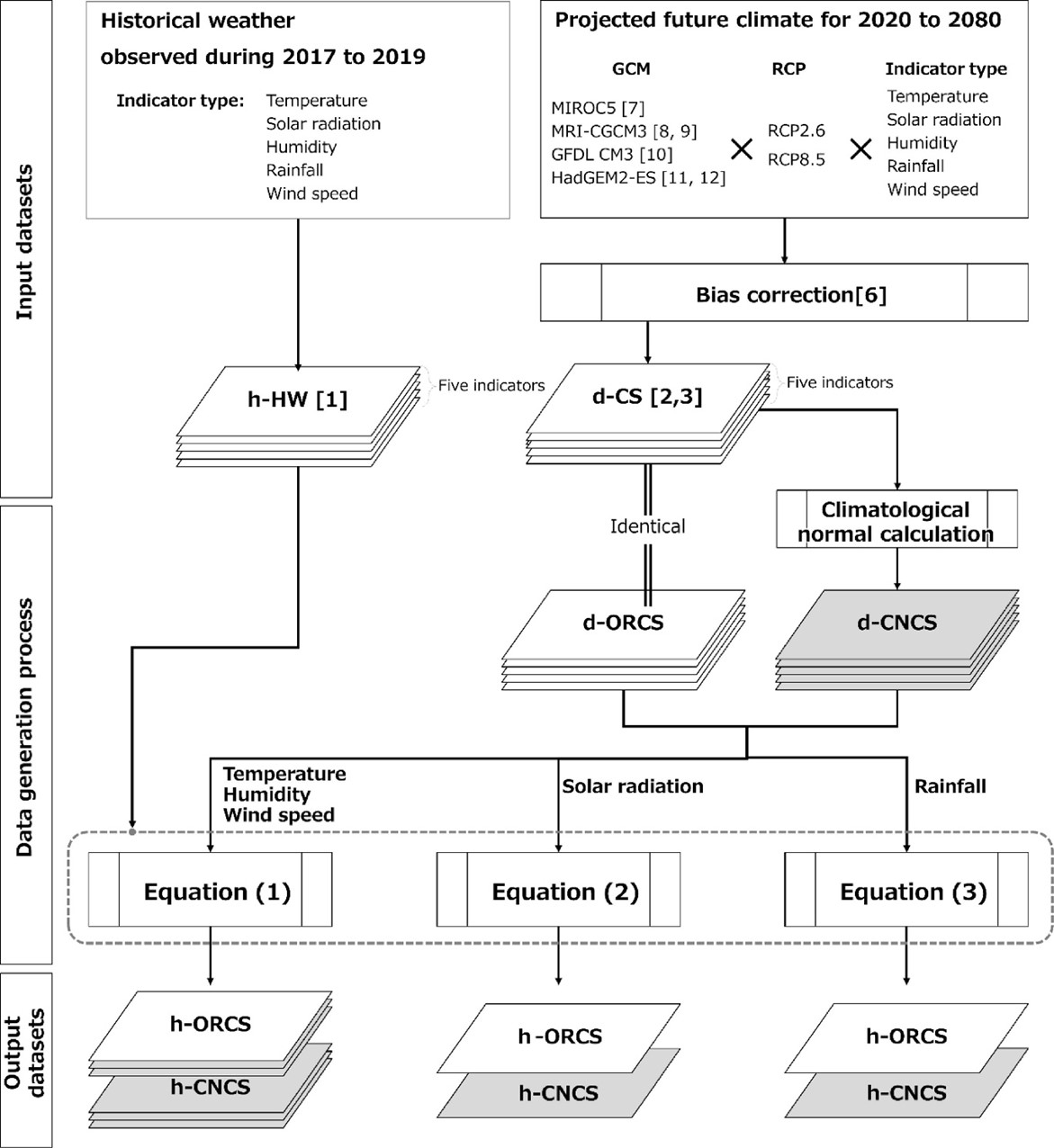Information of Paper
Hourly future climate scenario datasets for impact assessment of climate change considering simultaneous interactions among multiple meteorological factors
Authors:Yuki Hiruta, Noriko N. Ishizaki, Shuichi Ashina, Kiyoshi Takahashi
Year:2022
Journal:Data in Brief, Volume 42, June 2022, 108047
Keywords
Future climate scenario, Historical weather data, Hourly time resolution, Global climate model (GCM), Representative concentration pathways (RCPs)
Abstract
Assessing the impacts of climate change in multiple fields, such as energy, land and water resources, and human health and welfare is important to find effective strategies to adapt to a changing climate and to reduce greenhouse gases. Many phenomena influenced by climate change have diurnal fluctuations and are affected by simultaneous interactions among multiple meteorological factors. However, climate scenarios with detailed (at least hourly) resolutions are usually not available. To assess the impact of climate change on such phenomena while considering simultaneous interactions (e.g., synergies), climate scenarios with hourly fluctuations are indispensable. However, because meteorological indicators are not independent, the value of one indicator varies as a function of other indicators. Therefore, it is almost impossible to determine the functions that show all relationships among meteorological elements considering the geographical and temporal (both seasonal and time of a day) characteristics. Therefore, generating hourly scenarios that include possible combinations of meteorological indicators for each hourly observation unit is a challenging problem. In this study, we provide secondary future climate scenario datasets that have hourly fluctuations with reasonable combinations of meteorological indicator values that are likely to occur simultaneously, without losing the long-term climate change trend in the existing daily climate scenarios based on global climate models. Historical hourly weather datasets observed from 2017 to 2019 (the reference years) are used to retrieve short-term fluctuations. Bias-corrected daily future climate scenario datasets generated using four global climate models (GFDL CM3, HadGEM2-ES, MIROC5, and MRI-CGCM3) and two Representative Concentration Pathways (RCP8.5 and 2.6) are used to model long-term climate change. A total of 48 different types of hourly future scenario datasets for five meteorological indicators (temperature, solar radiation, humidity, rainfall, and wind speed) were acquired, targeting a projection period from 2020 to 2080, for 10 weather stations in Japan. The generated hourly climate scenario datasets can be used to project the quantitative impacts of climate change on targeted phenomena considering simultaneous interactions among multiple meteorological factors.





